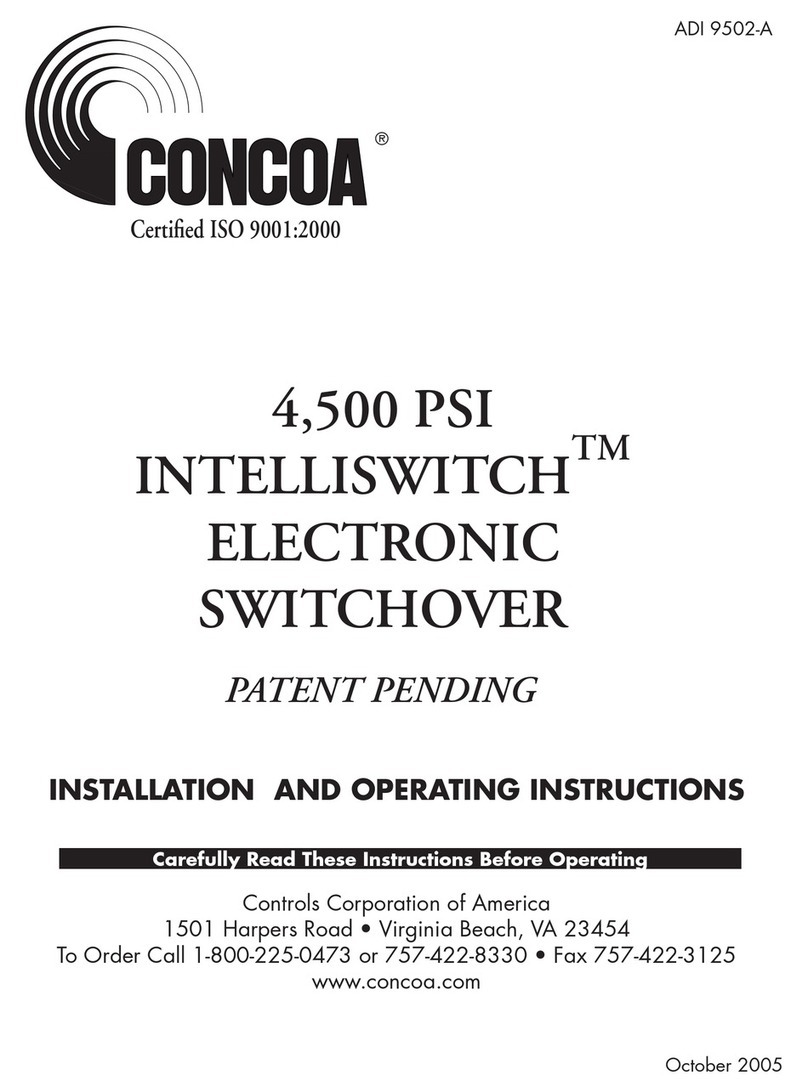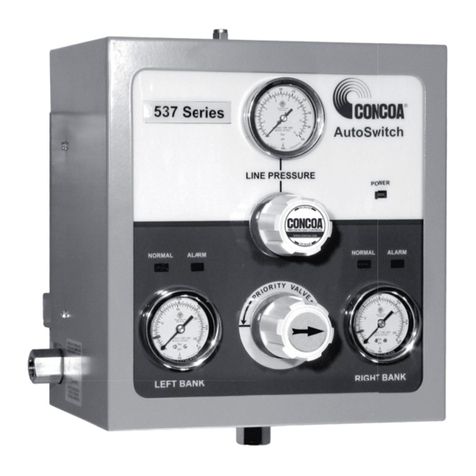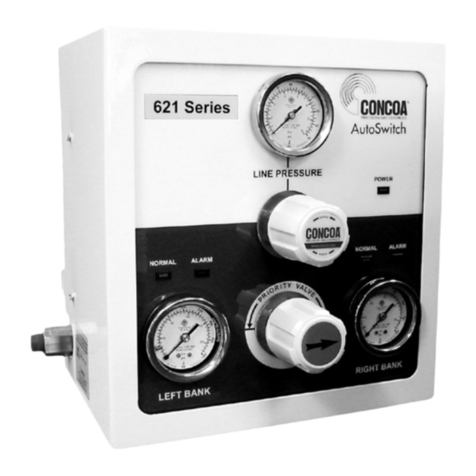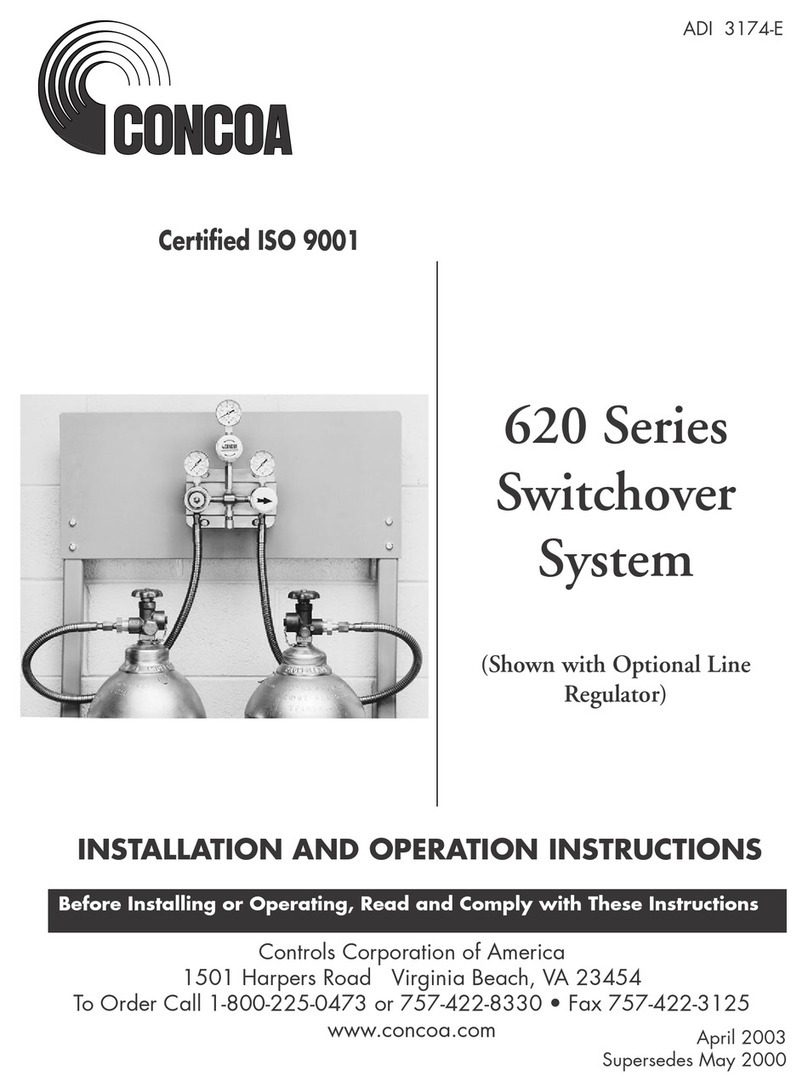
Table of Contents
Safety ..................................................................................................................
4
User
Responsibility .....................................................................................................................
6
Description of
Product ........................................................................................
6
Features – Operation from Cyrogenic Liquid Nitrogen Sources ...........................................
6
Features – High Flow Cryogenic Valves ...................................................................................
6
Features – Compact Enclosure with Condensate Drain .........................................................
6
Features – Insulated Switching Mechanism.............................................................................
6
Features – Switchover ................................................................................................................
6
Features – Oxygen Deficiency Monitor Input...........................................................................
7
Features – Manual Bank Switching ...........................................................................................
7
Features – Purging ......................................................................................................................
7
Features – Units of Measure.......................................................................................................
7
Features – Security Lockout ......................................................................................................
7
Features – Alarm Notification ....................................................................................................
7
Features – Ethernet Port / Web Server......................................................................................
7
Features – USB Port ....................................................................................................................
7
Features – Relief Valve Overpressure Protection ...................................................................
7
Modes of Operation – On Demand Mode & Display When in On Demand Mode...............8
Modes of Operation – Keep Full Mode & Display When in Keep Full Mode.....................10
Installing the CryoWiz™ .......................................................................................................11
General Arrangement ...........................................................................................................11
Left Side Detail ......................................................................................................................12
Right Side Detail ...................................................................................................................13
Back Detail Showing Mounting Tabs ..................................................................................14
Connecting Inlets and Outlets .............................................................................................15
Installing Pipe Thread Connections ....................................................................................15
Connecting the Condensation Drain Line...........................................................................15
Connecting the Dry Nitrogen Line.......................................................................................15
Connecting the Relief Valve Vent Line................................................................................16
Connecting the Hot Gas Purge Vent Line...........................................................................16
Connecting an Oxygen Deficiency Monitor ........................................................................17
Connecting a Remote Alarm ................................................................................................18
DIP Switches .........................................................................................................................19
SW2-1 - Keypad Lockout......................................................................................................20
SW3-1 - Alarm Configuration ...............................................................................................20
SW3-2 – Audible Alarm On/Off.............................................................................................20
Setting Remote Alarm Outputs............................................................................................21
Installing Real Time Clock Backup Batteries .....................................................................22
Connecting Power ................................................................................................................23
CryoWiz
™
Startup ................................................................................................................23
Operating the
CryoWiz™ ..........................................................................................................
24
Alarm Conditions
.......................................................................................................................
25
Communication Mode
...............................................................................................................
26
Connecting the Web Server
.....................................................................................................
26
Power
Requirements ...........................................................................................
26
Service...............................................................................................................
26
Factory Default Settings.......................................................................................
26
CE Declaration of Conformity................................................................................
28
Warranty......................................................................................................................................
29

































